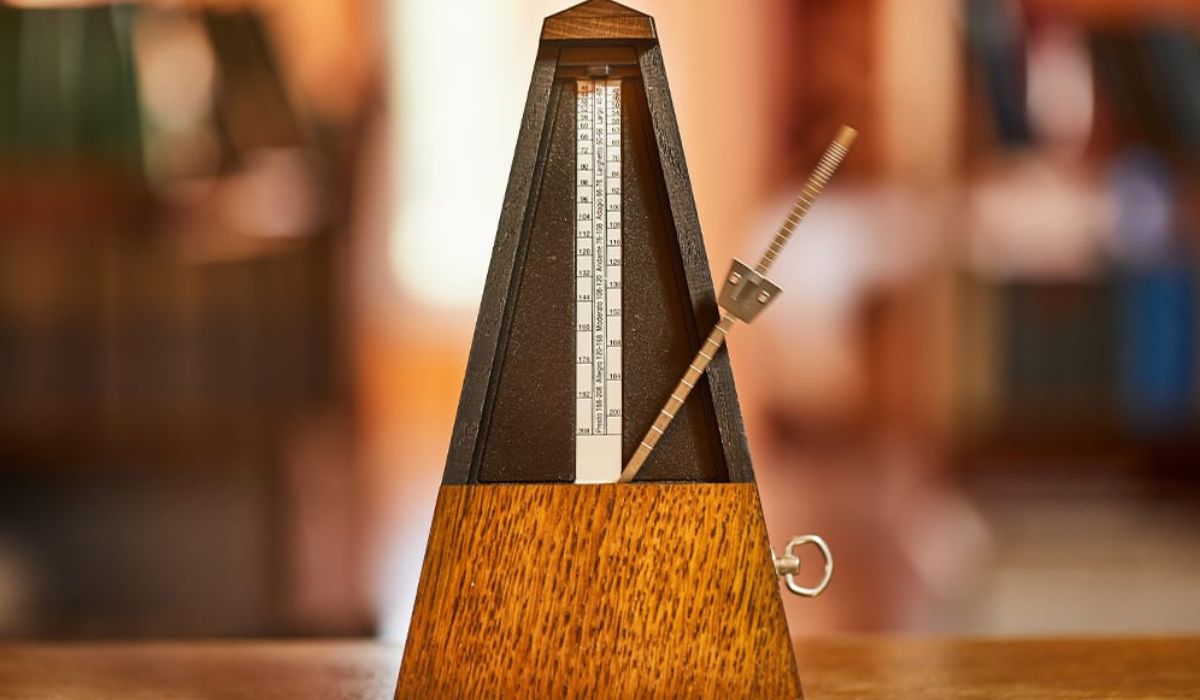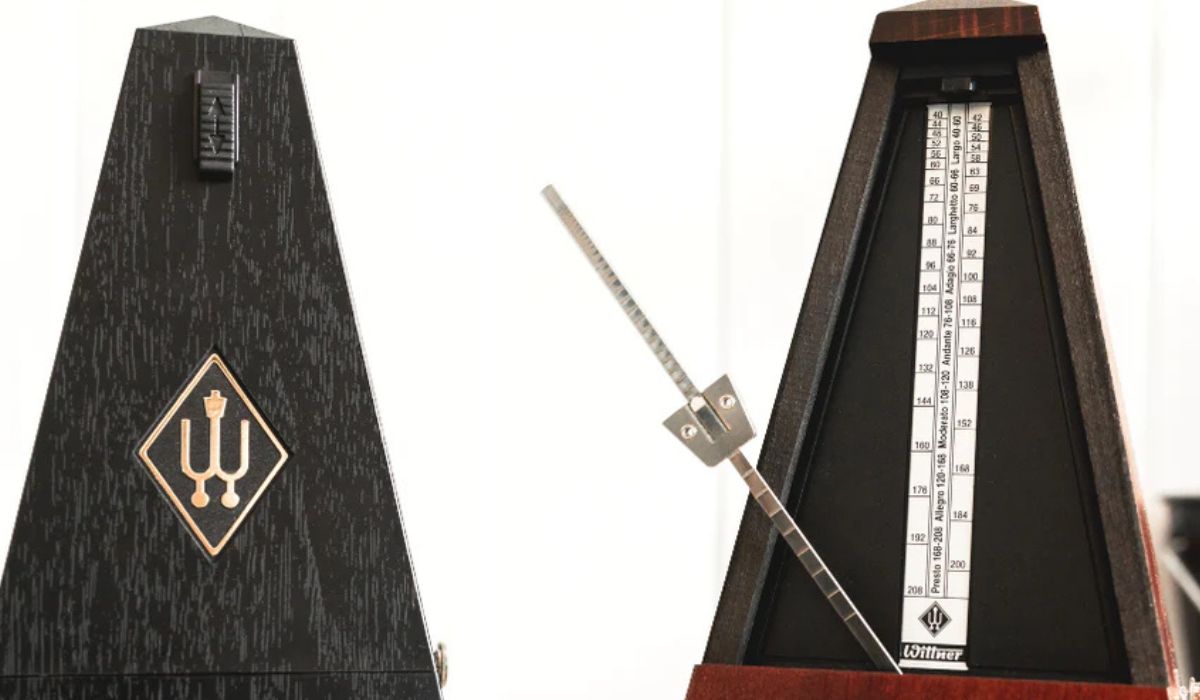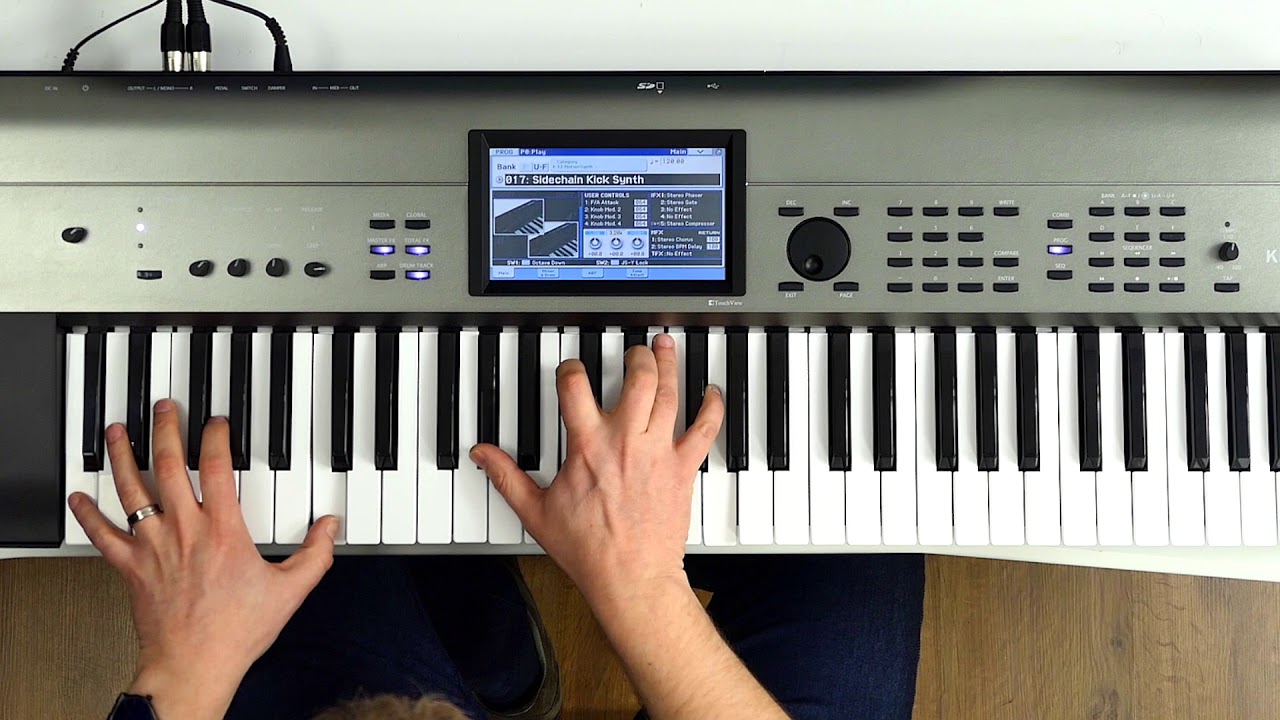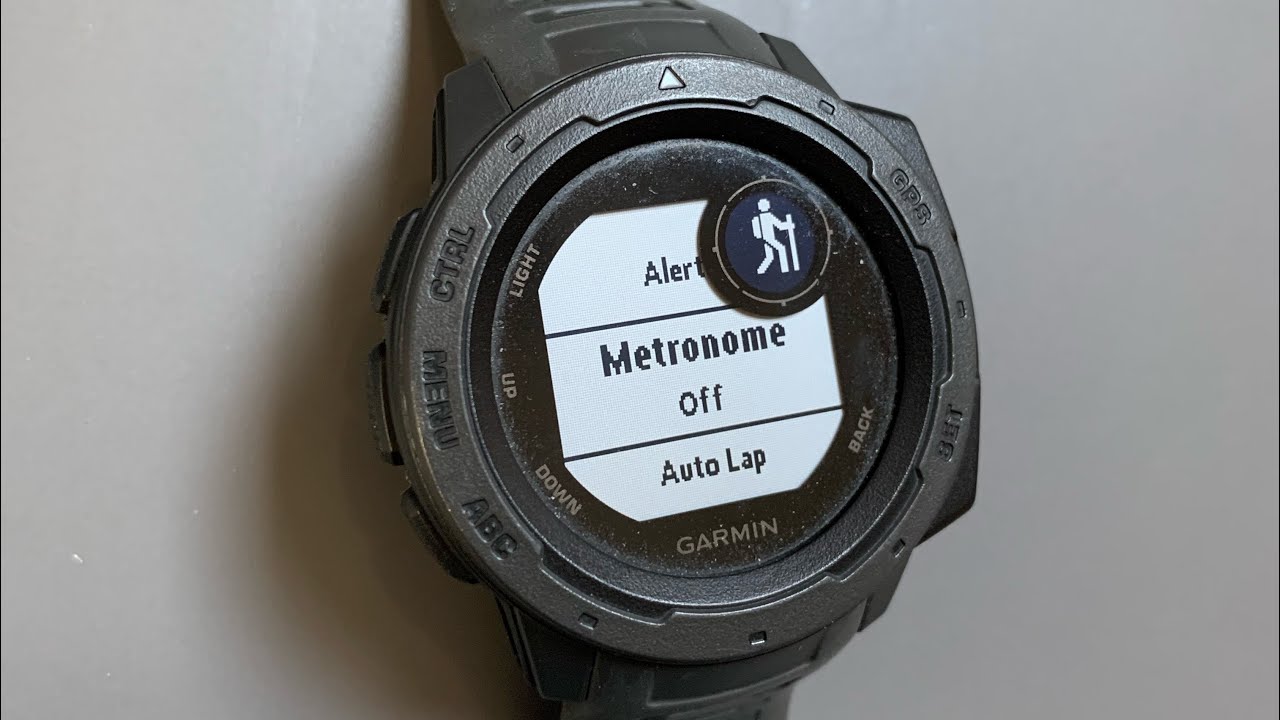Home>Production & Technology>Metronome>How Do I Use A Metronome


Metronome
How Do I Use A Metronome
Published: January 14, 2024
Learn how to effectively use a metronome to improve your musical timing and rhythm. Discover essential tips and techniques to enhance your practice sessions.
(Many of the links in this article redirect to a specific reviewed product. Your purchase of these products through affiliate links helps to generate commission for AudioLover.com, at no extra cost. Learn more)
Table of Contents
Introduction
Welcome to the world of music and rhythm! Whether you’re a beginner musician or a seasoned professional, one tool that can greatly enhance your musical skills and sense of timing is a metronome. In this article, we will explore the uses and benefits of a metronome, how to use one effectively, and provide some exercises to incorporate into your practice sessions.
A metronome is a device that produces regular beats to help musicians stay in time and maintain a consistent tempo. It is an essential tool for musicians of all levels and is widely used in various music genres, including classical, jazz, rock, and pop.
Why is using a metronome important? Well, imagine playing in a band or performing in an ensemble where everyone needs to stay in sync. A metronome acts as a reliable pulse that helps musicians maintain a consistent tempo and play together harmoniously. It also helps to develop a strong sense of timing and rhythm, which is crucial for any musician.
In addition to helping with timing, a metronome can assist in building speed and accuracy. By gradually increasing the tempo while practicing with a metronome, musicians can push their technical limits and improve their playing abilities. It’s like having a patient and consistent practice partner who never gets tired!
In the following sections, we will delve deeper into the types of metronomes available, how to set them up, and explore some exercises and tips for using a metronome effectively. So, let’s dive in and discover how this simple yet powerful tool can take your musical skills to new heights!
What is a Metronome?
A metronome is a device used to keep time and maintain a steady beat in music. It is a crucial tool for musicians of all levels and is commonly used in practice sessions, rehearsals, and performances. The metronome produces a consistent series of beats at a specific tempo, allowing musicians to play in sync and develop their sense of rhythm.
The traditional metronome consists of a pendulum, which swings back and forth, creating an audible click or ticking sound. The pendulum can be adjusted to different tempos by varying its length. However, modern metronomes have evolved to include digital versions, smartphone apps, and computer software that offer more flexibility and features.
Metronomes are available in various shapes and sizes, ranging from small portable devices to larger, more advanced models with additional functions. They typically have a display that shows the selected tempo and may include a headphone jack, volume control, and even visual cues like LED lights or flashing screens to help musicians follow the beat.
Aside from the traditional “click” sound, some metronomes also offer different sounds such as drum patterns, piano tones, or custom sounds to add variety and suit different musical styles. This allows musicians to personalize their practice and make it more engaging.
Whether you’re a pianist, guitarist, drummer, or any other musician, a metronome can be a valuable tool in your practice routine. It not only helps improve accuracy and timing but also trains your internal sense of pulse and helps build confidence in playing with others.
Now that we understand what a metronome is, let’s explore why it’s important to use one in your musical journey.
Why Use a Metronome
Using a metronome offers numerous benefits for musicians at all skill levels. Here are a few reasons why incorporating a metronome into your practice routine can be incredibly valuable:
- Develops a Strong Sense of Timing: One of the most important skills for any musician is the ability to keep time and maintain a consistent tempo. A metronome provides an external reference point, helping you develop a precise internal sense of timing. It ensures that you’re playing in rhythm and helps you stay synchronized with other musicians.
- Improves Accuracy: Playing along with a metronome forces you to play with precision. It reveals any inconsistencies or small timing errors in your playing, allowing you to make the necessary adjustments and improve your overall accuracy. By practicing with a metronome, you develop a more controlled and tight playing style.
- Builds Speed Gradually: A metronome is a great tool for building speed and dexterity. You can start at a slower tempo and gradually increase the speed as you become more comfortable. This approach allows you to push your technical limits, build muscle memory, and play fast passages more effortlessly over time.
- Enhances Musicality: Playing with a metronome helps you focus on the rhythm and timing of your music, enabling you to develop a deeper understanding of phrasing and musical expression. It teaches you how to shape musical phrases within a consistent pulse, bringing out the nuances and dynamics of your playing.
- Prepares for Real-World Scenarios: When performing with other musicians or in an ensemble, it’s crucial to stay in sync with the group. Practicing with a metronome prepares you for these real-world scenarios by training your ability to follow a conductor or play alongside other musicians with precision.
- Keeps Track of Progress: Many metronomes provide features like beat counters, timers, or recording capabilities that allow you to track your progress over time. These features can be incredibly useful for monitoring your improvement, setting goals, and staying motivated throughout your musical journey.
Overall, using a metronome is an effective way to develop your timing, accuracy, speed, and musicality. It’s a versatile tool that can benefit musicians in all genres and instruments. So, grab a metronome and start incorporating it into your practice sessions to take your musical skills to new heights!
Types of Metronomes
Metronomes come in a variety of types and styles, each with its own unique features and advantages. Here are some of the most common types of metronomes available:
- Traditional Mechanical Metronomes: These metronomes have a classic design with a pendulum that swings back and forth, producing an audible click or tick. They are often made of wood and have a nostalgic charm. The tempo can be adjusted by moving a weight along the pendulum or by adjusting its length. While traditional mechanical metronomes are reliable and produce a natural sound, they can be sensitive to vibrations and may require regular maintenance.
- Electronic Metronomes: Electronic metronomes have become increasingly popular due to their accuracy and versatility. They usually have a digital display that shows the selected tempo and allow for a wide range of tempos to be set. Electronic metronomes can produce various sounds such as clicks, beeps, or tones, and some even have volume and accent adjustment options. They often come with additional features like rhythm patterns, pre-set tempos, and memory functions.
- Smartphone Apps: With the advancement of technology, many musicians now use metronomes in the form of smartphone apps. These apps offer a wide range of features, including customizable sounds, visual cues, and tempo adjustments. They are highly portable, convenient, and often come with additional functionalities like recording capabilities, tempo mapping, and synchronization with other devices. However, it’s important to note that not all smartphone apps provide the same level of accuracy as dedicated metronome devices.
- Computer Software: For musicians who prefer practicing with their computers, there are various metronome software options available. These programs offer similar features to electronic metronomes, allowing for precise tempo adjustments, visual cues, and other customizable settings. They are often used in conjunction with recording software or music production software, making them ideal for composers, producers, or musicians who work extensively on their computers.
When choosing a metronome, consider your specific needs and preferences. Traditional mechanical metronomes offer a charming aesthetic and a natural ticking sound, while electronic metronomes, smartphone apps, and computer software provide more versatility and advanced features. Ultimately, the type of metronome you choose will depend on your musical goals, budget, and personal preference.
Now that we have explored the different types of metronomes available, let’s move on to the next section and learn how to set up a metronome for practice.
How to Set Up a Metronome
Setting up a metronome may vary depending on the type of metronome you are using. Here are some general steps to help you get started:
- Select the desired tempo: Determine the tempo or beats per minute (BPM) at which you want to practice. This will depend on the piece of music, the level of difficulty, and your own comfort level. For beginners, starting with a slower tempo and gradually increasing it is recommended.
- Choose the sound: Decide on the type of sound you prefer for the metronome clicks. Many metronomes offer a variety of options, including clicks, beeps, or even different instrument sounds like piano or drum patterns.
- Set the time signature: If you’re practicing music that has a specific time signature (such as 4/4 or 3/4), set the metronome to match that time signature. This will help you stay in sync with the rhythmic structure of the piece.
- Adjust the volume: If your metronome has a volume control, set it to a level that is audible but not overpowering. The volume should be comfortable for you to hear the metronome clearly without distracting you from your playing.
- Start playing: Once you have set up the metronome with your desired tempo, sound, time signature, and volume, you can start playing along with it. Use the metronome as your guide to keep a steady pace and maintain a consistent rhythm in your playing.
- Experiment with accents and subdivisions: As you become more comfortable with using a metronome, you can explore different accents and subdivisions within the beat. Some metronomes allow you to emphasize certain beats or divide the beat into smaller subdivisions, helping you work on intricate rhythms and syncopation.
Remember, practicing with a metronome is a skill in itself, so don’t be discouraged if it takes some time to get used to it. The goal is to develop a strong sense of timing and rhythm, which will greatly enhance your musical abilities.
Now that we have set up our metronome, let’s explore some of the basic features that metronomes offer to assist in our practice sessions.
Basic Metronome Features
Metronomes offer a range of features that can enhance your practice sessions and help you refine your timing and rhythm. Here are some of the basic features commonly found in metronomes:
- Tempo Adjustment: One of the fundamental functions of a metronome is the ability to adjust the tempo or beats per minute (BPM). This allows you to set the desired speed at which you want to practice.
- Time Signatures: Many metronomes allow you to set the time signature, which determines the number and type of beats in each measure. This feature ensures that the metronome aligns with the rhythm of the music you’re practicing.
- Accent and Subdivision: Some metronomes have the option to accentuate certain beats or divide the beat into smaller subdivisions. This feature is particularly useful for complex rhythms or syncopated passages where emphasis on specific beats is crucial.
- Visual Cues: In addition to audible clicks or beeps, many metronomes offer visual cues like LED lights or flashing screens. These visual indicators can further reinforce the beat and help you stay in time, especially if you prefer a more visual approach to practicing.
- Volume Control: Metronomes often come with volume control, allowing you to adjust the level of sound produced. You can set it to a comfortable volume that is audible but not overpowering.
- Pre-set Rhythms: Some metronomes include pre-set rhythm patterns like jazz, rock, or Latin rhythms. These patterns can add variety to your practice sessions and help you develop a sense of groove and style in your playing.
- Memory Function: Certain metronomes have a memory function that allows you to save and recall specific tempos or rhythm settings. This can be handy when practicing multiple pieces or when you want to revisit a particular tempo you have worked on previously.
These basic features provide musicians with versatility and flexibility in their practice sessions. It’s important to familiarize yourself with these features and explore how they can enhance your playing and sense of rhythm.
Now that we have a good understanding of the basic metronome features, it’s time to move on to the next section and discover some tips for using a metronome effectively to maximize your practice sessions.
Tips for Using a Metronome Effectively
Using a metronome effectively goes beyond simply setting a tempo and playing along. Here are some tips to help you get the most out of your metronome practice:
- Start Slow: When practicing with a metronome, it’s beneficial to start at a slower tempo than the desired performance speed. This allows you to focus on accuracy and precision before gradually increasing the tempo.
- Subdivide the Beat: Subdividing the beat means mentally or physically dividing each beat into smaller parts. This helps you develop a sense of rhythm and ensures that you remain consistent within each beat.
- Focus on Different Note Values: Experiment with different note values to work on rhythmic accuracy. Set the metronome to play on each beat, every two beats, or even on the offbeats to challenge yourself and improve your rhythmic versatility.
- Practice with Accents: Use the metronome’s accent feature to emphasize specific beats within a measure. This is particularly useful in music with syncopated rhythms or complex accents, helping you to lock into the groove and maintain a strong sense of pulse.
- Experiment with Dynamics: Use the metronome to help you practice dynamics in your playing. Start softly and gradually increase the volume on each beat, mimicking a crescendo. This helps you develop control over dynamics while maintaining a steady tempo.
- Record and Review: Record your practice sessions with the metronome and listen back to evaluate your timing and rhythmic accuracy. This allows you to identify areas that need improvement and gauge your progress over time.
- Combine with Technique Exercises: Incorporate metronome practice into your technique exercises. Whether you’re practicing scales, arpeggios, or other technical exercises, playing them with a metronome will help you build speed, accuracy, and evenness.
- Use Metronome Apps or Software: Take advantage of the convenience and versatility offered by metronome apps or software. These tools often have additional features like subdivisions, visual cues, and the ability to create custom rhythm patterns, providing you with more options for practicing and improving your rhythmic skills.
- Stay Relaxed: While practicing with a metronome, it’s important to maintain a relaxed and natural playing style. Avoid tensing up or rushing to keep up with the metronome. Instead, focus on staying in sync with the beat while playing with ease and fluidity.
By implementing these tips, you can make the most of your metronome practice sessions and significantly improve your timing, rhythm, and overall musicality.
Now, let’s explore some exercises that you can practice with a metronome to further enhance your skills.
Exercises to Practice with a Metronome
Practicing with a metronome not only helps improve your sense of timing and rhythm, but it also allows you to develop a strong foundation for musical expression. Here are some exercises that you can incorporate into your practice sessions:
- Scales and Arpeggios: Practice scales and arpeggios with a metronome to work on evenness and accuracy. Start at a slow tempo and gradually increase the speed as you become more comfortable. Focus on playing each note precisely in time with the metronome.
- Rhythm Patterns: Set the metronome to play different rhythm patterns, such as syncopations or dotted rhythms. This exercise helps improve your ability to accurately play complex rhythmic patterns and strengthens your sense of pulse and groove.
- Accented Beats: Use the metronome’s accent feature to emphasize different beats within a measure. Practice playing specific notes or chords on the accented beats while maintaining a consistent tempo. This exercise helps develop precision and control in your playing.
- Subdivisions: Set the metronome to a slow tempo and practice subdividing the beat. Start by playing one note per click, then gradually increase to two, three, or four notes per click. This exercise improves your ability to play with precision and develop a strong internal sense of timing.
- Polyrhythms: Challenge yourself by practicing polyrhythms with a metronome. For example, set the metronome to a steady beat and practice playing triplets or sixteenth notes over it. This exercise enhances your rhythmic coordination and strengthens your ability to simultaneously play different rhythmic patterns.
- Tempo Fluctuations: Practice playing with subtle tempo fluctuations by gradually speeding up and then slowing down while staying in sync with the metronome. This exercise helps develop flexibility in your playing and enhances your ability to respond to tempo changes in music.
- Play Along with Recordings: Select a recording of a song or piece and play along with it using a metronome. This exercise helps you practice playing in time with other musicians and reinforces your ability to stay in sync with different musical contexts.
- Dynamic Control: Use the metronome to practice playing with a consistent tempo while gradually increasing or decreasing the volume or intensity of your playing. This exercise helps develop control over dynamics and expression while maintaining a steady sense of pulse.
Remember to start these exercises at a tempo that allows you to play with accuracy and gradually increase the speed as you become more comfortable. Focus on precision and maintaining a steady pulse throughout each exercise.
By incorporating these exercises into your metronome practice, you will enhance your sense of timing, rhythm, and musicality, enabling you to become a more confident and expressive musician.
Now, let’s move on to the next section and explore some common mistakes to avoid when using a metronome.
Common Mistakes to Avoid
While using a metronome can greatly benefit your practice sessions, it’s important to be mindful of some common mistakes that musicians make when incorporating a metronome into their practice routine. By avoiding these pitfalls, you can ensure that you get the most out of your metronome practice:
- Relying too heavily on the metronome: While the metronome is a valuable tool, it’s important to develop your internal sense of timing and not become overly reliant on the metronome. Use it as a guide, but remember to trust your inner rhythm and musical intuition as well.
- Playing mechanically: When practicing with a metronome, it’s easy to fall into a mechanical and robotic playing style. Focus on infusing musicality and expression into your playing, even when playing with a metronome. Use dynamics, phrasing, and articulation to make your playing more engaging.
- Ignoring subdivisions: Subdividing the beat is essential for maintaining a steady rhythm. Avoid neglecting subdivisions and be conscious of the smaller parts within each beat. This will help you develop a precise sense of timing and facilitate more intricate rhythmic patterns.
- Not experimenting with different tempos: While it’s important to practice at a comfortable tempo, don’t be afraid to push yourself and explore different tempos. This will help improve your versatility and prepare you for playing with others in different musical contexts.
- Overlooking rhythmic variations: Music is not always played at an absolutely steady tempo. Be aware of the natural ebb and flow of the music, as some passages may require subtle rubato or rhythmic variations. Be flexible and responsive to the musical demands of the piece.
- Neglecting rest and silence: Just as important as playing in time is knowing when to stay silent. Use the metronome to practice rests and silences, as they contribute to the overall rhythm and musicality of a piece. Pay attention to the spaces between the notes.
- Becoming too reliant on visual cues: While visual cues can be helpful, be careful not to rely too heavily on them. Train your ears to listen to the metronome clicks or beeps rather than solely relying on the visual indicators. This will improve your sense of pulse and internalize the rhythm more effectively.
By avoiding these common mistakes, you can make the most of your metronome practice and develop a solid sense of timing, rhythm, and musical expression. Remember to approach your practice sessions with patience, focus, and a willingness to improve, and the metronome will become an indispensable tool in your musical journey.
Now that we have explored the common mistakes to avoid, let’s conclude our discussion on using a metronome.
Conclusion
Using a metronome is a powerful tool that can greatly enhance your musical skills and sense of timing. Whether you are a beginner musician or a seasoned professional, incorporating a metronome into your practice routine can yield incredible results. Through this article, we have explored the uses and benefits of a metronome, different types of metronomes available, and how to set them up for effective use.
We have also provided tips for using a metronome effectively, including exercises to practice with a metronome to improve timing, rhythm, and musicality. Additionally, we discussed common mistakes to avoid when using a metronome, ensuring that you make the most out of your practice sessions.
Remember, the metronome acts as your reliable practice partner, helping you develop a strong sense of timing, accuracy, and musical expression. It provides a solid foundation for playing with other musicians and performing in various musical settings.
As you continue your musical journey, make the metronome an essential part of your practice routine. Embrace the rhythmic discipline it offers, experiment with different tempos, subdivisions, and accents, and focus on playing with precision while injecting artistic expression into your music.
By diligently practicing with a metronome, you will witness significant improvements in your sense of timing, rhythm, speed, and overall musicality. So, grab your instrument, set your metronome, and embark on a rhythmic journey that will elevate your playing to new heights!











